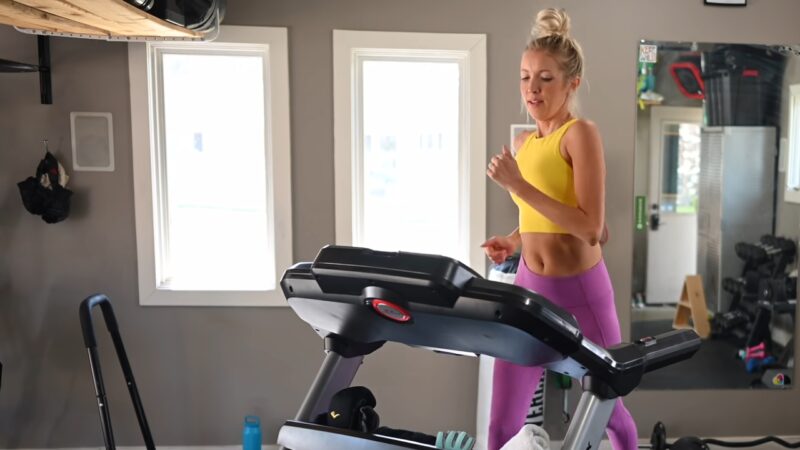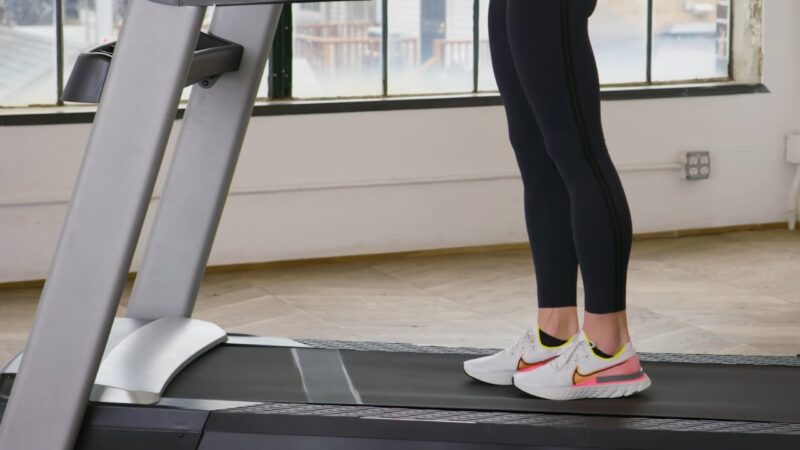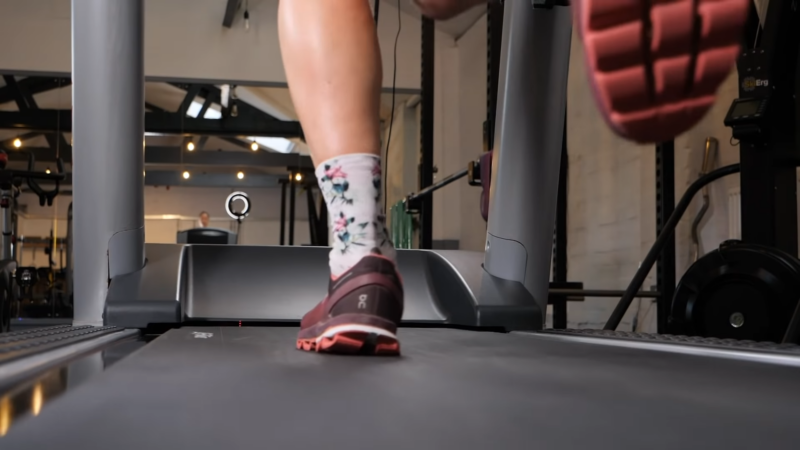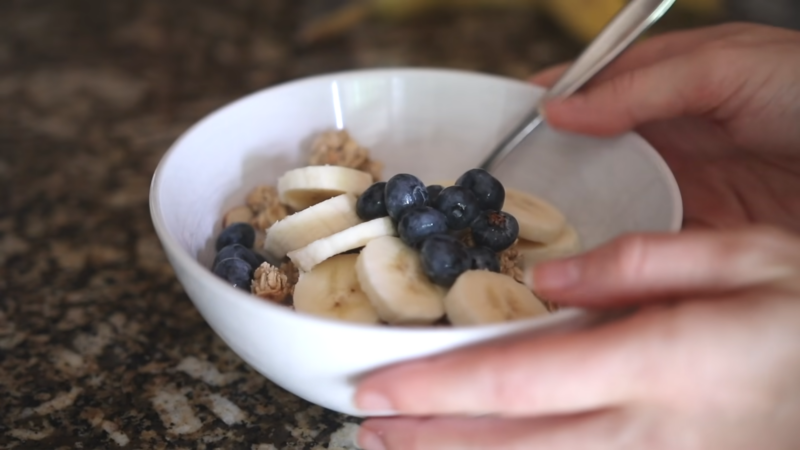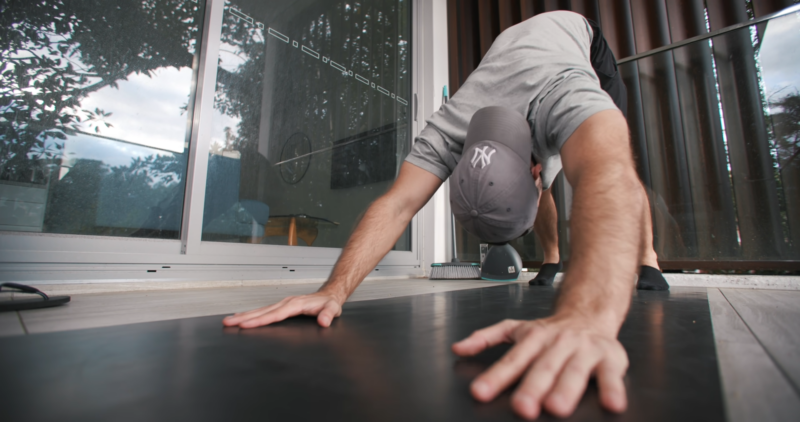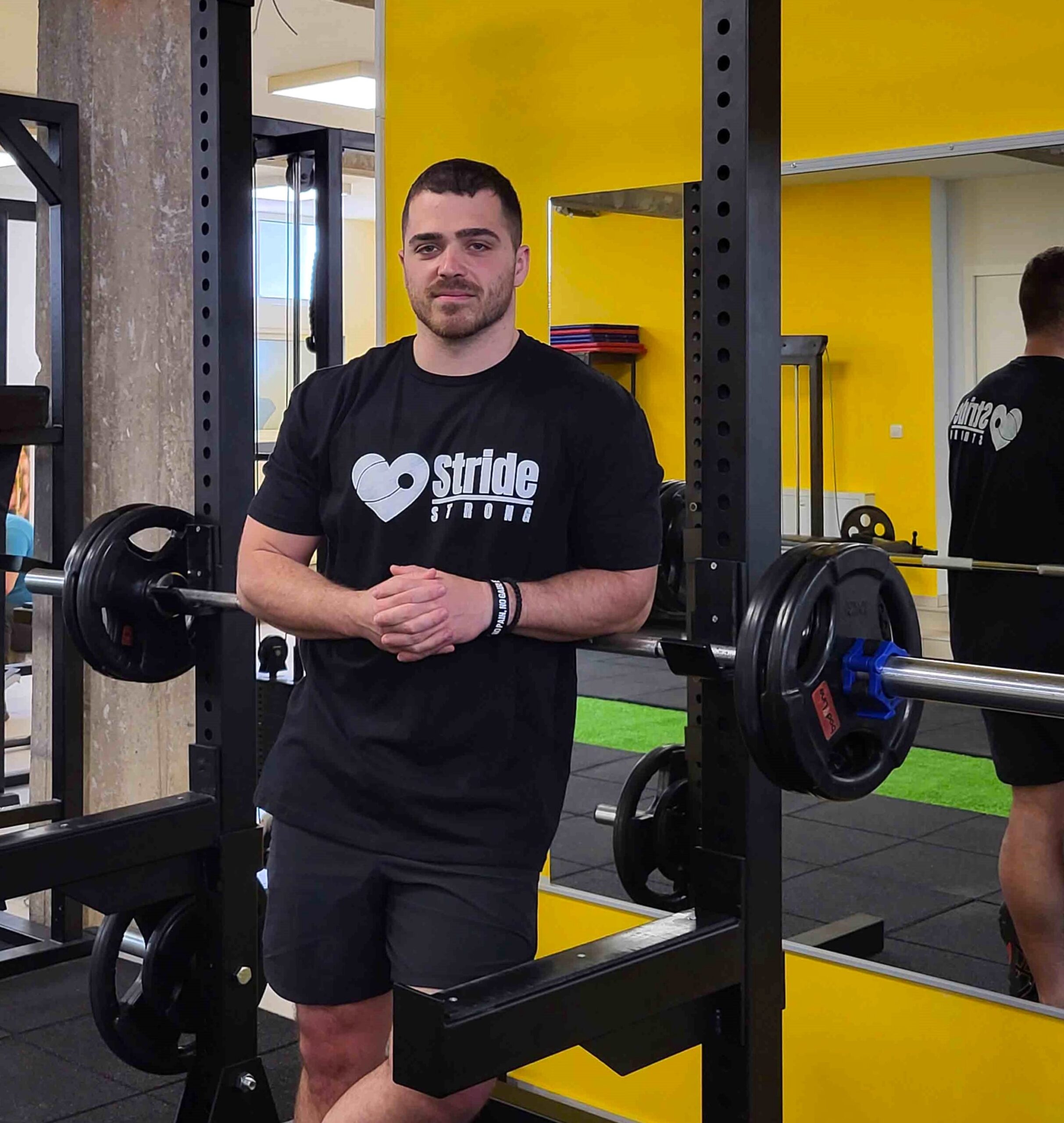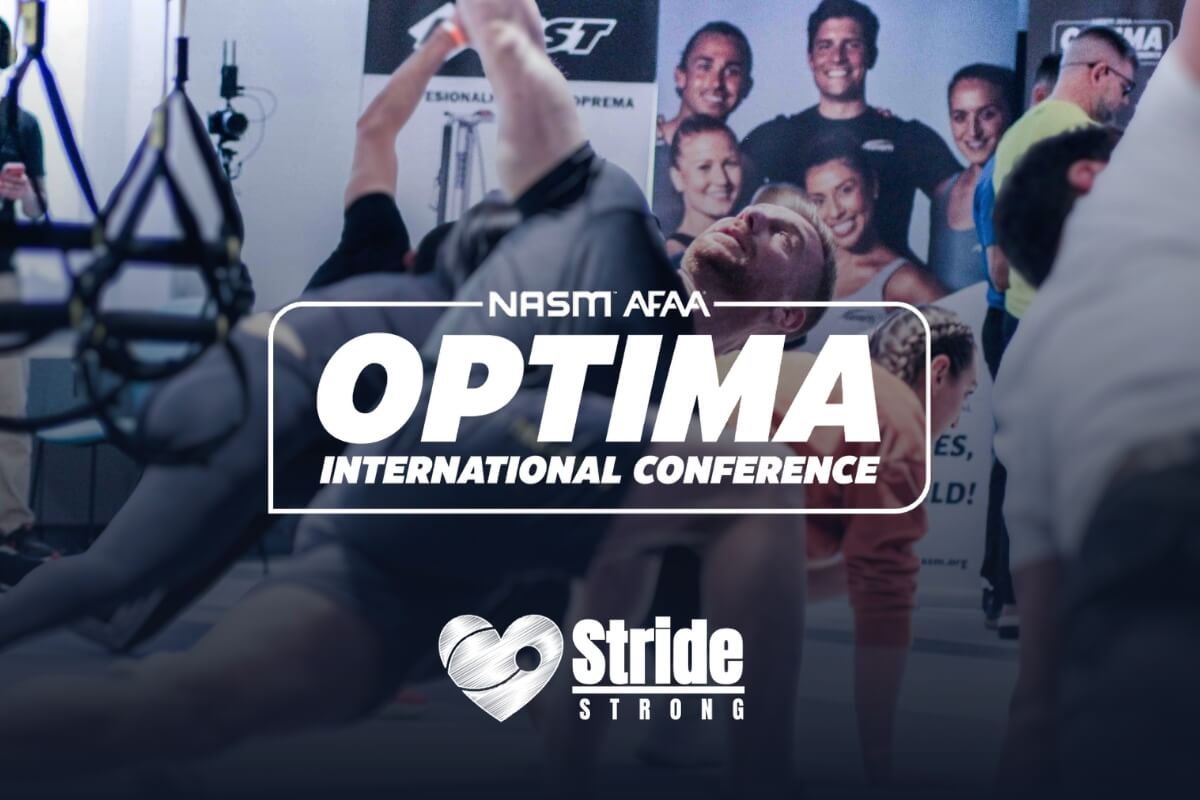As summer rolls around the corner, I’m here to share a little secret with you—it’s never too early or too late to start working towards that summer body you’ve always dreamed of.
And trust me, I know the journey can seem daunting at first, with all the workouts, diets, and routines out there. But let’s break it down together, making it more approachable and, dare I say, exciting.
I’ve pieced together a variety of treadmill exercises aimed at melting away fat and ramping up our cardio health.
So, what do you say? Are you ready to join me on this journey to getting in shape for summer?
Overview
I’ve put together a dynamic blend of treadmill exercises tailored for various fitness levels, ranging from casual gym-goers to high-performance athletes. These routines are designed to trim your waistline and enhance the endurance of your cardiovascular system, as this study says some people who were effected by stroke, can actually help them.
| Aspect | Details |
|---|---|
| Main Goal | Fat Reduction |
| Routine Type | Cardiovascular |
| Experience Level | Newcomer |
| Program Length | 16 Weeks |
| Frequency | 4 Days Weekly |
| Session Duration | 15-30 Min |
| Necessary Gear | Basic Items |
| Applicable To | Both Men & Women |
Remember, the suggested paces are for guidance only—adjust them to fit your comfortable running speed.
- Start with a brisk, light jog to warm up
- Switch between high-speed sprints and slower recovery periods
- Maintain a steady pace for longer runs to build endurance
- Alter inclines for added intensity
- Cool down with a gentle walk to the finish
“HIIT training will burn fat and reveal abs. Personally, I think the most effective cardio to help shrink the midsection are high-intensity intervals such as hill sprint and burpees,” says Shipp. HIIT burns 18% more calories 24 hours post-workout than strength training.
says Drew Shipp, C.P.T., owner of HiFi Personal Fitness Studio in Chicago, IL.
One study from MDPI shows that:
Regular exercises that involve improving cardiorespiratory fitness and the muscular system functional capacity, as they can result in a better cardiovascular and metabolic profile. Concurrent training consists of exercise using aerobic and strength exercises combined in the same session, and it has emerged to maximize training adaptations or health benefits such as improved cardiorespiratory capacity and muscle strength.
8 Hardcore Treadmill Training Sessions
1. “Hill Sprint” for Maximum Burn
Let’s start with one of my favorite treadmill workouts: “Hill Sprint” intervals. This routine is a game-changer for anyone looking to boost their cardio and burn fat efficiently.
I begin by setting the treadmill to a challenging 15% incline at a brisk pace of 7 mph. Stepping onto the moving belt mid-stride, holding onto the railings for safety, I run at this pace for 30 seconds.
Following this intense half-minute, I take a 30-second break by stepping off to the sides, still holding the handrails. This cycle is repeated four times, pushing my limits with each sprint.
After completing these four intervals, I decrease the incline by 3% and increase the speed by 1 mph, continuing with this new setting for another four intervals. This pattern is repeated, adjusting the incline and speed after every fourth interval, culminating in a total of 16 intervals.
For those starting at a slower pace, maintaining the same incline and speed adjustments is crucial. For instance, if beginning at 5 mph with a 15% incline, the progression would adjust to 6 mph at 12%, 7 mph at 9%, and finally 8 mph at 6%.
Fun fact: The “Hill Sprint” treadmill workout is that it mimics the challenging terrain of the world’s most daunting marathon courses, like the Boston Marathon’s Heartbreak Hill. By tackling these steep incline sprints, you’re essentially training your body to handle some of the toughest physical challenges known in the running world, all while burning fat and boosting your cardio efficiency.
| Interval | Incline | Speed (mph) | Duration (On/Off) |
|---|---|---|---|
| 1-4 | 15% | 7 | 30s/30s |
| 5-8 | 12% | 8 | 30s/30s |
| 9-12 | 9% | 9 | 30s/30s |
| 13-16 | 6% | 10 | 30s/30s |
2. 2-Mile Treadmill Adventure for Every Runner
Let’s talk about another treadmill workout I’ve grown to love: the “2-Mile Turn-Up.” This routine is all about changing speeds to keep the workout engaging and challenging. Here’s my approach:
The essence of this workout lies in its dynamic speed changes. Every 1/4 mile, I adjust the treadmill’s speed, cycling through 7, 8, 9, and 10 mph. This variation not only tests my endurance but also keeps me mentally engaged as I anticipate the next speed shift.
Unlike typical interval training that alternates between running and resting, the “2-Mile Turn-Up” focuses on continuous movement with speed variations based on distance. This method is excellent for pushing your limits in a different way.
I kick off at a comfortable 7 mph, gradually increasing my pace by 1 mph after each 1/4 mile. This gradual increase allows me to build up my speed steadily, reaching a brisk pace by the end of the first mile.
| Distance (Miles) | Speed (mph) |
|---|---|
| 0 – 0.25 | 7 |
| 0.25 – 0.5 | 8 |
| 0.5 – 0.75 | 9 |
| 0.75 – 1 | 10 |
| 1 – 1.25 | 7 |
| 1.25 – 1.5 | 8 |
| 1.5 – 1.75 | 9 |
| 1.75 – 2 | 10 |
The viral 12-3-30 treadmill workout continues to gain new fans, but many experts and participants alike agree that it may not be a great choice for beginners.
3. VO2 Challenge for Enviable Stamina
The “VO2 Challenge” stands as an intense trial of endurance and mental strength, aimed at elevating my fitness to its peak. Approaching it with both respect and determination, I recognize each session as a stepping stone towards achieving my fitness aspirations. Here’s my method for confronting this distinctive test:
- Initial Settings: I start with the treadmill at a 2% incline, setting the speed to 7 mph for male athletes or 6 mph for female counterparts.
- Progressive Intensity: Every two minutes, I ramp up the incline by 2.5%, steadily increasing the workout’s intensity. This methodical elevation in difficulty requires more from my body step by step, simulating the demanding VO2 Max test practiced by Team USA wrestlers.
This workout challenges my aerobic capacity and resilience like no other. By pushing my limits and maintaining the pace until total exhaustion, I gain a deep sense of accomplishment.
Due to its demanding nature, I limit this challenge to once or twice a month, allowing my body sufficient recovery and adaptation time. It’s not just a physical test but a mental battle, proving to be an essential part of my fitness journey.
Fun fact: This workout has its foundation in the same principles used by NASA to train astronauts for space missions. Just as astronauts need to have exceptional cardiovascular health and endurance to withstand the rigors of space travel, this workout aims to maximize your VO2 max, the maximum amount of oxygen your body can use during intense exercise.
| Time (Minutes) | Incline (%) |
|---|---|
| 0-2 | 2 |
| 2-4 | 4.5 |
| 4-6 | 7 |
| 6-8 | 9.5 |
| 8-10 | 12 |
| 10-12 | 14.5 |
| 12-14 | 17 |
4. Speed Ladder Drills For Quick Feet
Incorporating speed ladder drills to your treadmill workouts can significantly enhance your agility and pace. These exercises are designed to improve foot speed and coordination.
Interval Sprints: For this drill, I start at a pace that’s comfortable yet challenging and increase the treadmill’s speed by 0.5 mph every 30 seconds. In each interval, my goal is to maintain a high-intensity sprint.
- 60-second High Knees: Keeping the speed constant, I perform high knees for 60 seconds straight, focusing on lifting my knees to hip level.
- Side Shuffles: I reduce the treadmill’s speed for safety, turn to my side, and do shuffles for 30 seconds on each side, ensuring I lift my feet to prevent tripping.
- Butt Kicks: I perform butt kicks for 30 seconds, trying to bring my heels up to touch my glutes with each stride.
Recovery Periods
Walking Recovery: After each drill, I take a 1-minute walking break to catch my breath. The pace is slow enough to recover, but brisk enough to keep my heart rate up.
Active Stretching: I incorporate 30 seconds of active stretching, including leg swings and lunges, to ensure my muscles remain limber throughout the workout. This helps me prevent injury and prepares me for the next set of drills.
Research from NCBI says:
Agility ladder represents a relatively inexpensive and easy to implement training tool, which allows coaches and players to be imaginative, manipulating task constraints during exercises and to develop the movement coordination patterns found in team sports
5. The Gut-Check Hill Challenge
The “Gut Check Hill Sprint” stands as the pinnacle of treadmill challenges, pushing both mental and physical boundaries to their limits. It’s a workout I reserve for only two to four times a month, aiming to fortify my resilience and strength.
Here’s how I Go Through This Formidable Routine
I initiate the workout with the treadmill set to a steep 15% incline and a speed of 10 mph. With caution, I step onto the moving belt and push myself to sustain the pace for as long as I can manage. Ideally, aiming for a full-speed sprint lasting up to a minute, I ensure not to overextend to the brink of exhaustion.
Following this exertion, I take a 2-minute breather, standing on the side rails of the treadmill, before diving into short bursts of 5 to 10 seconds of sprinting, interspersed with 20-second intervals of rest. After completing these sprints, I allow myself a 1-minute rest period.
The final leg of the workout is a 12-minute walk at a 15% incline, maintaining a steady pace between 3 and 3.5 mph. During the rest periods, you occasionally sip on intra-workout supplements to help stave off fatigue.
In each session, you should strive to outdo previous sprint times, constantly challenging yourself to reach new heights. Listening to your body is crucial.
Fun fact: The steep incline and intense bursts mimic the challenging conditions found at high elevations, where oxygen is scarcer. This not only pushes your cardiovascular system to adapt and become more efficient but also significantly boosts your endurance and strength over time.
| Phase | Incline | Speed | Duration |
|---|---|---|---|
| Initial Sprint | 15% | 10 mph | 1xMax (up to 1 min) |
| Rest Period | – | – | 2 minutes |
| Short Sprints | 15% | 10 mph | 5-10 secs On/20 secs Off |
| Rest Period | – | – | 1 minute |
| Incline Walk | 15% | 3-3.5 mph | 12 minutes |
6. 20 Minutes of Treadmill Intensity and Muscle Power
The “20-Minute Beatdown” merges the intensity of strength training with the relentless pace of cardiovascular exercise into a routine that’s both challenging and thrilling.
Here’s how it unfolds:
- Treadmill Speed: I start by pushing the treadmill’s speed a bit beyond my usual jogging comfort zone. For example, if 8 mph is my standard, I’ll bump it up to 9 mph, and as the workout progresses, I may increase it to 10 mph.
- Workout Rounds: The workout alternates between 1-minute treadmill sprints and 1-minute rounds of chin-ups or push-ups, aiming for a total of 20 sets. This breakdown results in 5 sets each of chin-ups and push-ups, interspersed with 10 one-minute dashes on the treadmill.
In the chin-up segments, my objective is to perform as many repetitions as possible within each 60-second timeframe, allowing myself brief rests only if needed. With push-ups, the emphasis is on maintaining proper form throughout. If I find myself reaching my physical limits, I switch to holding a push-up plank position for the remainder of the minute.
This workout format, combining rapid treadmill sprints with rigorous strength exercises, not only tests my endurance and muscular strength but also keeps the session dynamic and engaging. It’s a compact, yet potent, way to hit multiple fitness goals within a tight 20-minute window.
Repeat this cycle until you’ve completed 5 sets of chin-ups and push-ups, along with 10 one-minute treadmill runs.
| Exercise | Duration |
|---|---|
| Chin-Ups | 1 min |
| Treadmill Run | 1 min |
| Push-Ups | 1 min |
| Treadmill Run | 1 min |
Fun fact: This workout is that despite its short duration, it’s incredibly effective at boosting both aerobic and anaerobic fitness levels. Studies have shown that high-intensity circuit training like this can burn more calories per minute than traditional steady-state exercises, making it an efficient way to improve cardiovascular health and muscle endurance.
This workout is a perfect storm of endurance, strength, and perseverance, challenging me to push beyond my limits with every session. It’s an ideal choice for anyone looking to intensify their fitness regimen with a mix of cardio and strength training.
7. Sculp Yourself with “Get Peeled Session”
The “Get Peeled” workout is my go-to powerhouse routine, perfectly crafted for quick fat loss and an intense workout experience that not only slices through fat but also pumps up my upper body.
Here’s My Approach
I kick things off with a dynamic superset of bodyweight exercises, powering through 15 pull-ups, 20 push-ups, and 10 chin-ups back-to-back. This trio effectively targets a wide array of upper body muscles, setting the stage for the cardio work to come.
Right after the muscle-strengthening segment, I take on the treadmill with a 1/4-mile run or sprint, pushing myself to my speed limit. To maintain the flow, I keep the treadmill rolling so I can hop right back on for the next round immediately, keeping the workout seamless and efficient.
This cycle repeats a total of 6 times, creating a relentless blend of strength and cardio that tests my limits with each round. If you need to catch breath, I take a brief pause at the end of a run, but aim to keep these breaks short to maintain the intensity of the workout.
Fun fact: This workout is a favorite among athletes and fitness enthusiasts for its “bang for your buck” efficiency.
| Exercise | Reps |
|---|---|
| Pull-Ups | 15 |
| Push-Ups | 20 |
| Chin-Ups | 10 |
| 1/4mi Run | x |
8. Fartlek Training for Speed Variation
Fartlek, a Swedish term meaning “speed play,” is a training technique that blends continuous training with interval training. It’s a flexible workout that I often recommend for those looking to enhance both speed and endurance.
Training Principles
Fartlek training traditionally involves varying your speed and intensity throughout your run. These speed intervals can be structured or random and are interspersed with lower-intensity periods of recovery. What’s important is that Fartlek training is not just about going fast, but also about the speed variation, making it both fun and challenging.
- Start with a warm-up: 5-10 minutes of easy jogging
- Alternate between sprints and jogs: for example, sprint for 1 minute and jog for 2 minutes
- Finish with a cool down: 5-10 minutes of easy jogging
Adapting to Treadmill
On a treadmill, Fartlek training becomes more controlled, but the essence of the workout remains the same. Use the treadmill settings to switch between speeds, making sure to listen to my body’s responses.
- Begin with a steady warm-up speed (e.g., 6 mph)
- Increase to a high-intensity sprint speed (e.g., 8-10 mph) for a specific duration
- Reduce to a moderate jog speed (e.g., 4-6 mph) for recovery
By manipulating the treadmill’s speed settings, you can create a structured yet versatile Fartlek session that helps me stay engaged and pushes my limits without the need for an outdoor space.
What is the Best Nutrition for Optimal Performance?
Achieving an optimal physique by summer involves more than just intense treadmill workouts; it necessitates a focused approach to nutrition. I understand the importance of what goes into my body, as it fuels my performance and recovery.
Macronutrient Balancing
It’s crucial for me to balance my macronutrients to sustain energy for high-intensity training. My diet typically consists of:
- Proteins: Essential for muscle repair, I aim for lean sources like chicken breast or fish, ensuring I consume around 1.2 to 2.0 grams per kilogram of my body weight.
- Carbohydrates: I choose complex carbs, such as sweet potatoes and whole grains, which provide sustained energy release.
- Fats: To support hormone health and fuel longer-duration activities, I include healthy fats from avocados and nuts in moderation.
My macronutrient ratio may alter based on my training intensity and duration.
Count your calories in a diet journal and create weekly goals. Focus more on your consumption if you really want to lose weight since we can only burn so much with exercise.
Says fitness expert Kim Quigley.
Pre and Post-Workout Meals
I carefully plan my pre-workout meal to include a balance of carbs and protein about 1 to 3 hours before exercise to maximize my energy levels. For example:
- Pre-workout meal: A banana with a scoop of whey protein.
After workouts, my post-workout meal is crucial for recovery. It typically consists of protein for muscle repair and carbohydrates to replenish glycogen stores. I consume this within 45 minutes to maximize recovery. For instance:
- Post-workout meal: Grilled chicken breast with quinoa and vegetables.
This strategic nutrition approach complements my treadmill routines to help me get shredded by summer.
What Is the Recovery and Injury Prevention Process?
When I approach intense treadmill workouts, I prioritize recovery and employ strategies to prevent injuries. Efficient recovery is crucial for muscle repair, while a solid injury prevention plan helps me stay consistent in my training.
Active Recovery
Active recovery is an essential component of my routine, especially after a rigorous treadmill session. I focus on low-intensity activities such as walking or yoga, which promote circulation and aid in the removal of lactic acid from my muscles. This process not only facilitates healing but also prepares my body for the next workout.
This study shows that:
HIIE protocols have varied considerably but typically involve repeated brief sprinting at an all-out intensity immediately followed by low-intensity exercise or rest. The length of both the sprint and recovery periods has varied from 6 s to 4 min.
Injury Prevention Strategies
For injury prevention strategies, I stick to a strict regimen. I always begin with dynamic stretching to warm up my muscles and increase my range of motion. Then, I incorporate strength training exercises that target stabilizing muscles, ensuring my body is well-balanced and less prone to injury.
Post-workout, I commit to static stretching to improve flexibility and reduce muscle tightness. Finally, I listen to my body and rest whenever necessary, as overtraining is a common path to injury.
Related Posts:
- The 20-Minute Hotel Room Workout - 10 Quick Exercises
- 5 Ways to Use the Treadmill for Strength Training at…
- 5 Innovative Treadmill Workouts Suitable for Every…
- Stairmaster vs Incline Treadmill: Which is More Effective?
- Does Using a Treadmill Help in Reducing Belly Fat?
- Get Your First Pull-Up in 30 Days - Just Follow This Guide







